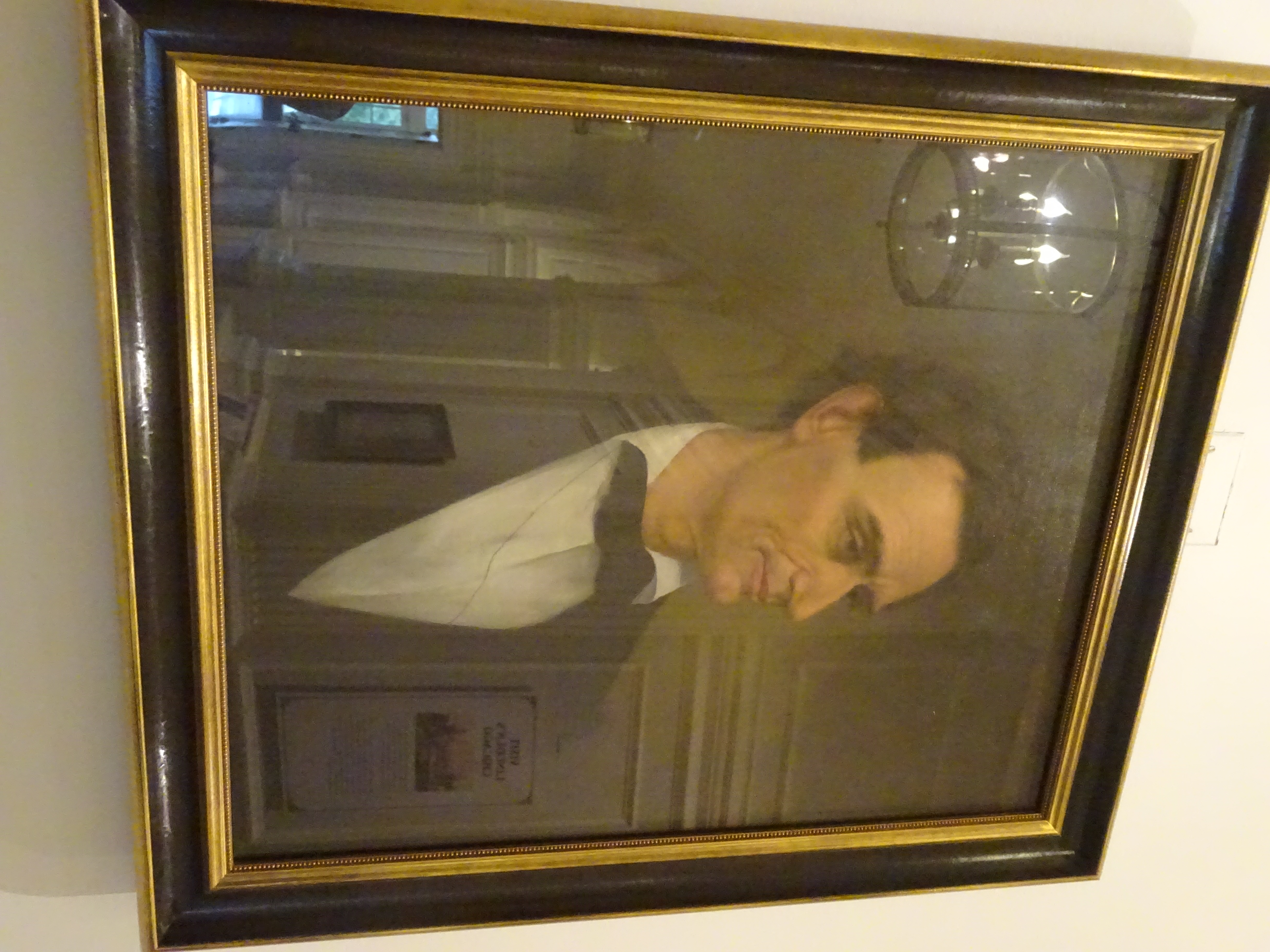On June 13, 1860, the newly selected Republican nominee for president, Abraham Lincoln fidgeted as he attempted to sit still for a portrait artist. The painting by Thomas Hicks is considered the first portrait oil painting ever of the man who would soon become our sixteenth president. Hicks had come to Springfield to capture the likeness of the rough, western lawyer that would preside over America’s greatest trial. It would be one of many portraits, both in painting and in the still new technology of photography, that Lincoln would sit for in his life.
While he sat, Illinois attorney Orville Hickman Browning “spent a portion of the day with Lincoln talking to him whilst Mr Hicks worked upon his portrait.” Browning recalled, “[Hicks] completed it this P. M. In my judgment it is an exact, life like likeness, and a beautiful work of art. It is deeply imbued with the intellectual and spiritual, and I doubt whether any one ever succeeds in getting a better picture of the man.”
Thomas Hicks was born in Newtown, Pennsylvania, a rural enclave closer to Trenton, New Jersey than it is to Philadelphia. He quickly showed his talent, moving to New York when he was fifteen to study at the National Academy of Design, where his first major painting, “The Death of Abel,” was exhibited in 1841. A few years later he moved to Europe and studied in London, Paris, Florence, and Rome, before returning to New York four years later and beginning a successful career as a portrait painter. He would go on to paint some of the most iconic figures of the period, including Henry Ward Beecher, Harriet Beecher Stowe, William Cullen Bryant, Margaret Fuller, Henry Wadsworth Longfellow, Oliver Wendell Holmes, and perhaps most ironically, Edwin Booth. But his most famous portrait is his painting of Abraham Lincoln.
Made more famous by its wide distribution as an engraving, the original painting is now exhibited at the Chicago Historical Society. I visited there several years ago and took the below photo. Unfortunately, the painting has a glass cover and it’s impossible to get a photograph of it without glare from the exhibit lighting.

Hicks became a philanthropist during his highly successful painting career, although he has been largely forgotten since his death in 1890. Mostly this is because his portraiture style had become out-of-date and photography had become so popular that painted portraits were being obsolete, except by the very wealthy.
Lincoln, of course, has been the subject of many paintings, at least 131 photographs of various styles, and hundreds (or thousands) of statues and busts around the world. Hicks may have faded from memory, but his post-nomination portrait helped get Lincoln’s face known to a curious general public ahead of the 1860 election.
[Photo by David J. Kent]

Lincoln: The Fire of Genius: How Abraham Lincoln’s Commitment to Science and Technology Helped Modernize America is available at booksellers nationwide.
Limited signed copies are available via this website. The book also listed on Goodreads, the database where I keep track of my reading. Click on the “Want to Read” button to put it on your reading list. Please leave a review on Goodreads and Amazon if you like the book.
You also follow my author page on Facebook.
David J. Kent is President of the Lincoln Group of DC and the author of Lincoln: The Fire of Genius: How Abraham Lincoln’s Commitment to Science and Technology Helped Modernize America and Lincoln: The Man Who Saved America.
His previous books include Tesla: The Wizard of Electricity and Edison: The Inventor of the Modern World and two specialty e-books: Nikola Tesla: Renewable Energy Ahead of Its Time and Abraham Lincoln and Nikola Tesla: Connected by Fate.










